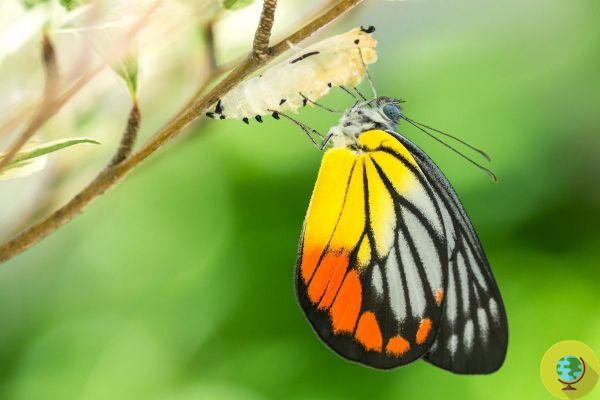
Monarch butterflies, typical of Central America, gut the larvae of the same species and 'drink' them while still alive
Monarch butterflies, typical of Central America, gut the larvae of the same species and 'drink' them while still alive. It is the first time that scientists have documented such behavior
Not all larvae grow into beautiful butterflies. Some become food for their fellows, who suck fluids from their bodies as a ploy to attract females. Recently, scientists attested to the first observations of monarch butterflies adults who 'drink' from the body of the larvae - dead or alive.
To open the cocoons, butterflies use small claws placed on their paws: in this way they can pierce the casing and suck the liquids that come out. This behavior seems to be typical of male specimens: the fluids coming from the larvae are used to ward off predators and to produce pheromones capable of attracting the females of the species.
(Read also: Monarch butterflies on the verge of extinction: the lowest number of specimens has been reached)
The larvae writhe very quickly in what appears to be a (vain) attempt to avoid death at the hands of the adult specimens - they explain the authors of the study. - Many questions still remain open regarding this bizarre behavior, such as what are the plant compounds that direct adult butterflies towards the larvae, or if there are other species of butterflies dedicated to this practice in the world. Further studies will be needed to better understand the extent and spread of this phenomenon.
The larvae of the Danainae family usually feed on the leaves of a plant, the Asclepias, which contain toxic alkaloids absorbed by the larvae and then transformed into chemicals useful to protect them from predators. Another use of these particular alkaloids is the production of useful pheromones during the mating phases: these are transferred to the females together with the sperm, as a 'nuptial gift'.
It is likely that the butterflies are directed towards the leaves of Asclepias which have already been damaged by the chewing operated by the larvae. If a butterfly accidentally destroys a cocoon, the resulting wound will release a chemical aroma that will attract the adult specimen and encourage it to damage the larva even more and feed on the liquid it is made of, according to the researchers.
Follow us on Telegram | Instagram | Facebook | TikTok | Youtube
Fonte: Ecological Society of America
We also recommend:
- Edible insects: the EU's first green light for the sale of flour moths as food arrives
- Biodiversity Day: each of us can save butterflies by contributing to their census
- Germany banned glyphosate starting in 2024: the historic law that protects insects from pesticides (and more)


























